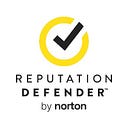Best Practices on How to Safeguard Your Information Online
Studies related to online information privacy find that most of internet users have already had an account breached, although many are unaware that their information has been compromised. In the digital age, it’s highly likely that some of your information is either out there or will be out there in the near future. All of the information that is shared via the internet has the potential to be targeted by cyber criminals or hackers.
While it may be virtually impossible to completely protect yourself online, taking some precautionary measures and using best practices can make it significantly reduce the chance of being targeted.
Follow these basic steps to keep your identity safe when you’re online.
Use two-factor authentication whenever possible. Passwords are a good protection measure, but the two-factor authentication method enhances the security of your accounts. When you enable two-factor authentication, it will require you to not only enter your password but also use a second form of ID verification, such as a finger print or text messaged code, making it infinitely harder for hackers to get access.
Avoid public Wi-Fi as much as possible. Free, public Wi-Fi and hotspots are great to get online while on the road or to minimize your mobile data usage. However, due to their public nature, anyone including hackers might access them and start intercepting data from other users. Whenever you need to go online on the go, using your mobile data is a more secure option.
Keep your tech updated. It might be tedious to update software, but downloading the latest version of the operating system, browser, and apps on your devices ensures that you’ve got the most recent security updates in place. If you don’t have advanced expertise in tech, when you browse online use the well-known browsers. These have several layers of security to impede malicious hackers from accessing your data.
Check your credit reports. Checking your credit reports each year is a simple way to see whether your credit profile is being used without your consent. Your identity might be mixed in account fraud schemes, in which a hacker opens accounts in your name or uses your personal details for unknown transactions. If you find potential signs of fraudulent activity on your credit report, call the credit bureau and your credit card issuer to establish the extent of the damage and limit any further fraud.
